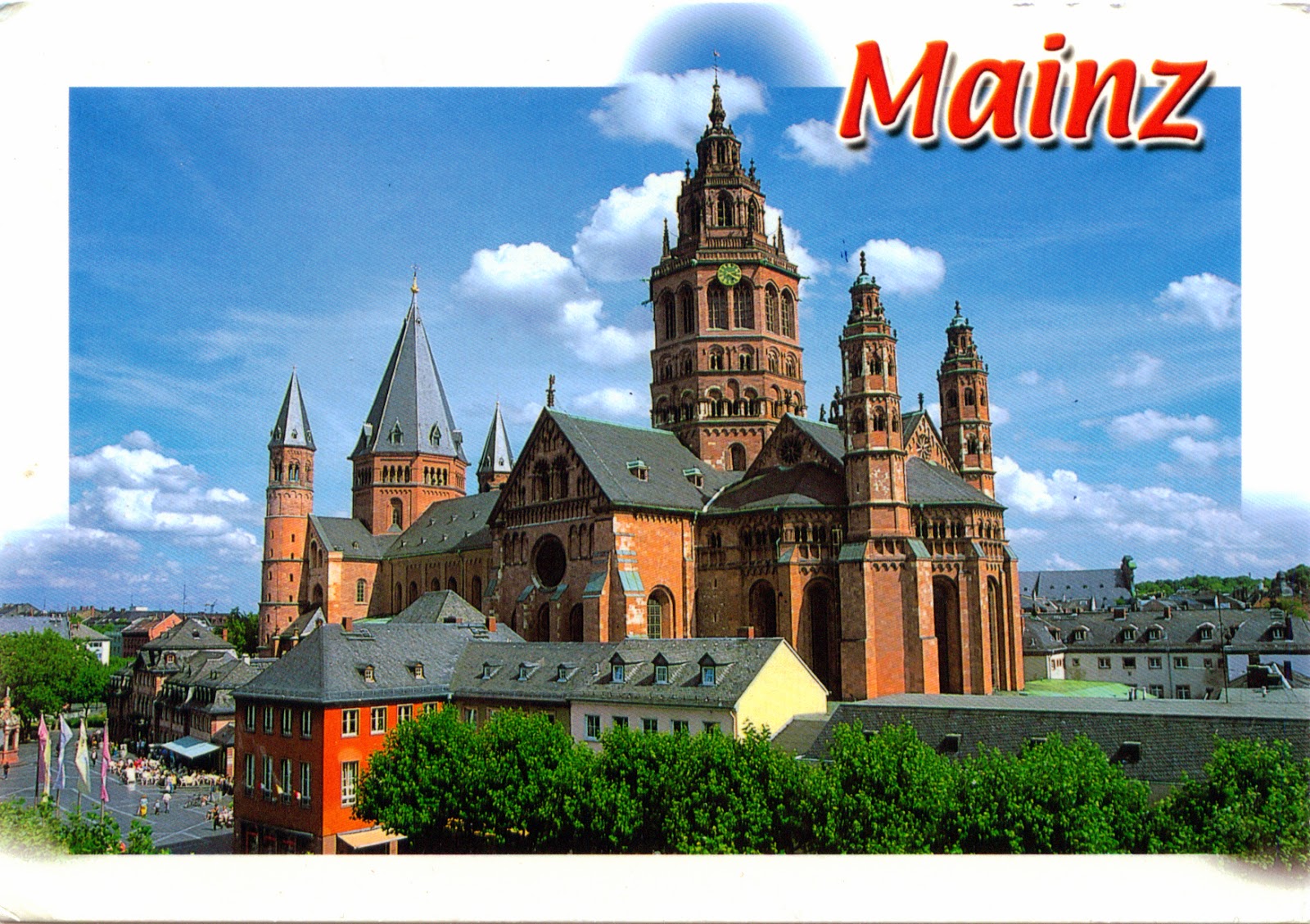Built with 1000 years ago, the Mainz Cathedral (or St. Martin's Cathedral) was part of Willigis' vision of Mainz as the second Rome. He ordered the construction of the cathedral in the pre-Romanesque Ottonian architecture, but later exterior additions over many centuries have resulted in the appearance of various architectural influences seen today. The new cathedral consisted of a double chancel with two transepts, and the main hall was built in the typical triple-nave "cross" pattern. Six towers rose from the church. A cloister was enclosed in the structure and a small freestanding church, St. Mary's Church, connected by a colonnade. This small church developed later into the collegiate church of St. Maria ad Grada.
In 1100, Henry IV ordered reconstruction of the cathedral, strucked by fire in 1081, and Archbishop Adalbert I of Saarbrücken (1110-1137) renovated it, having as pattern the Romanesque Speyer Cathedral. Already at the time of renovations on the western segment of the cathedral, new architectural styles were being ushered in. This included Gothic additions and, later, Baroque pieces as well. Mainz suffered heavily in the late 18th century. Following the invasion by French revolutionary troops in 1792, Mainz came under attack from Prussian troops in 1793 in the siege that led to the end of the Republic of Mainz. The cathedral was used as an army camp for several years, and therefore large amounts of the cathedral's artefacts were sold, the wooden interior was burned for heat.
The buiding was restored almost permanent in the 19th century, and at the conclusion of these reconstructions it was once again repainted. Conservation efforts began again in the 1900s, but the works stopped in 1916 due to WWI. Between 1924 and 1928 the fundaments were completely reinforced by a new fundament made of concrete. In WWII, Mainz was a target of Allied bombing, and the cathedral was hit several times in August 1942. Most of the roofs burned, and the top level of the cloister was destroyed. The vault, however, withstood the attacks and remained intact. The damaged elements were restored as authentically as possible, a process which continued well into the 1970s. In 2001, new efforts were begun to restore the cathedral both inside and outside.
About the stamps
The first stamp, depicting a tagetes, belong to the set Blumen, about which I wrote here. The second stamp was issued on January 2, 2014 to celebrate 1250 Years of the Lorsch Abbey, an UNESCO World Heritage Site.
References
Mainz Cathedral - Wikipedia
Sender: Regina Sammet, Anne Hippe, Claudia Bukur-Konig, and Iain Stewart (Meetup in Meinz)
Sent from Rotenburg an der Fulda (Hesse / Germany), on 07.01.2015
Photo: D. Scherf

.jpg)
No comments:
Post a Comment